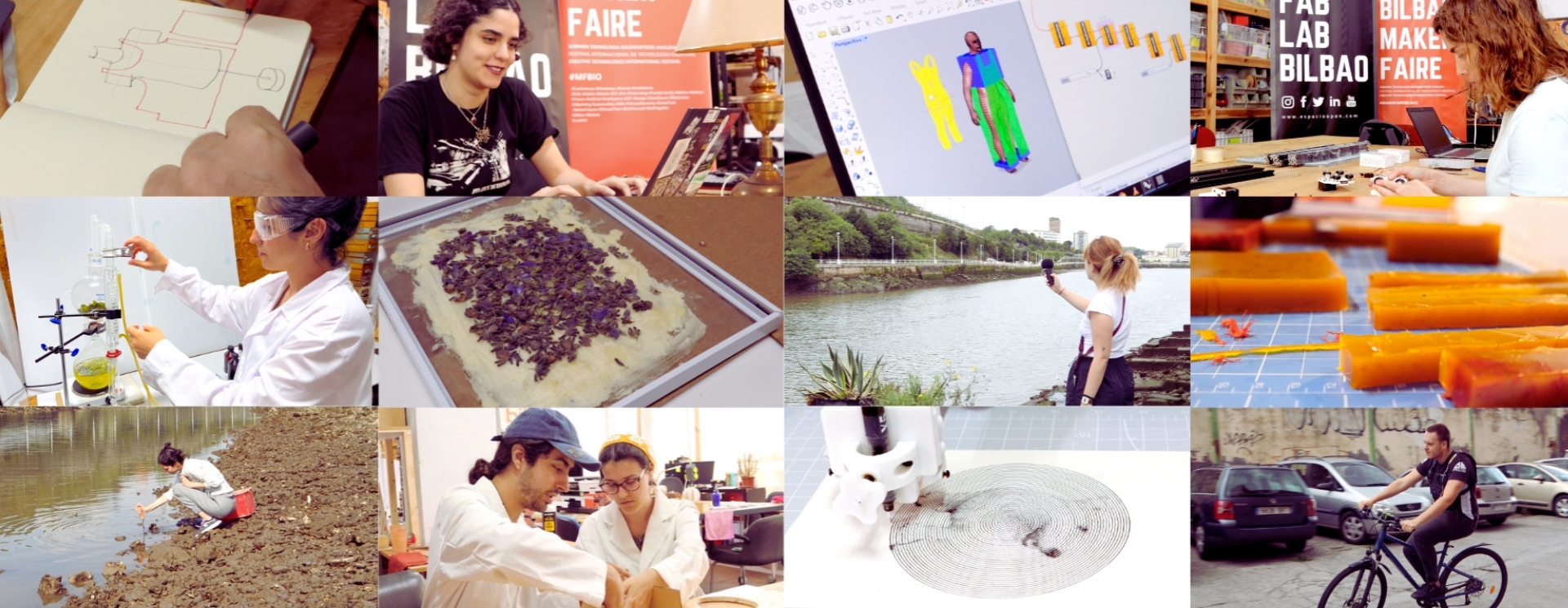Maker Ekintzaile: Exploring the Intersection of Creativity and Open Technologies
Espacio Open is a cultural centre and social projects accelerator that operates at the intersection of contemporary culture, open technologies, and social innovation. Through its digital fabrication laboratory, Fab Lab Bilbao, it provides tools and support to foster creative and artistic projects that generate a positive social impact in the community.
One of Espacio Open’s main objectives is to support grassroots initiatives and local talent by providing space, tools, and guidance to help them incorporate creative technologies into their processes. Through the Residencias de Creación (Creative Residencies) programme, Fab Lab Bilbao offers expert mentoring and funding annually to enable local creators to integrate digital fabrication tools into their creative workflows. These projects utilise open-source tools, with at least part of the outcomes being openly shared to benefit the wider community.
Throughout 2024, Fab Lab Bilbao hosted nine creative projects exploring the use of digital fabrication technologies in a wide range of creative disciplines, including fashion, ceramics, music, drawing, architecture, and scent creation.
During the creative residencies, artists had the opportunity to integrate 3D printing, laser cutting, creative electronics, sensor technology, and biomaterial development into their creative processes.
With these residencies, Espacio Open focuses on creating new environments for learning, research, and experimentation to promote cultural production and creation as a driving force for knowledge dissemination and innovation.
These are the projects that took shape throughout 2024 at Fab Lab Bilbao, the digital fabrication laboratory of Espacio Open:
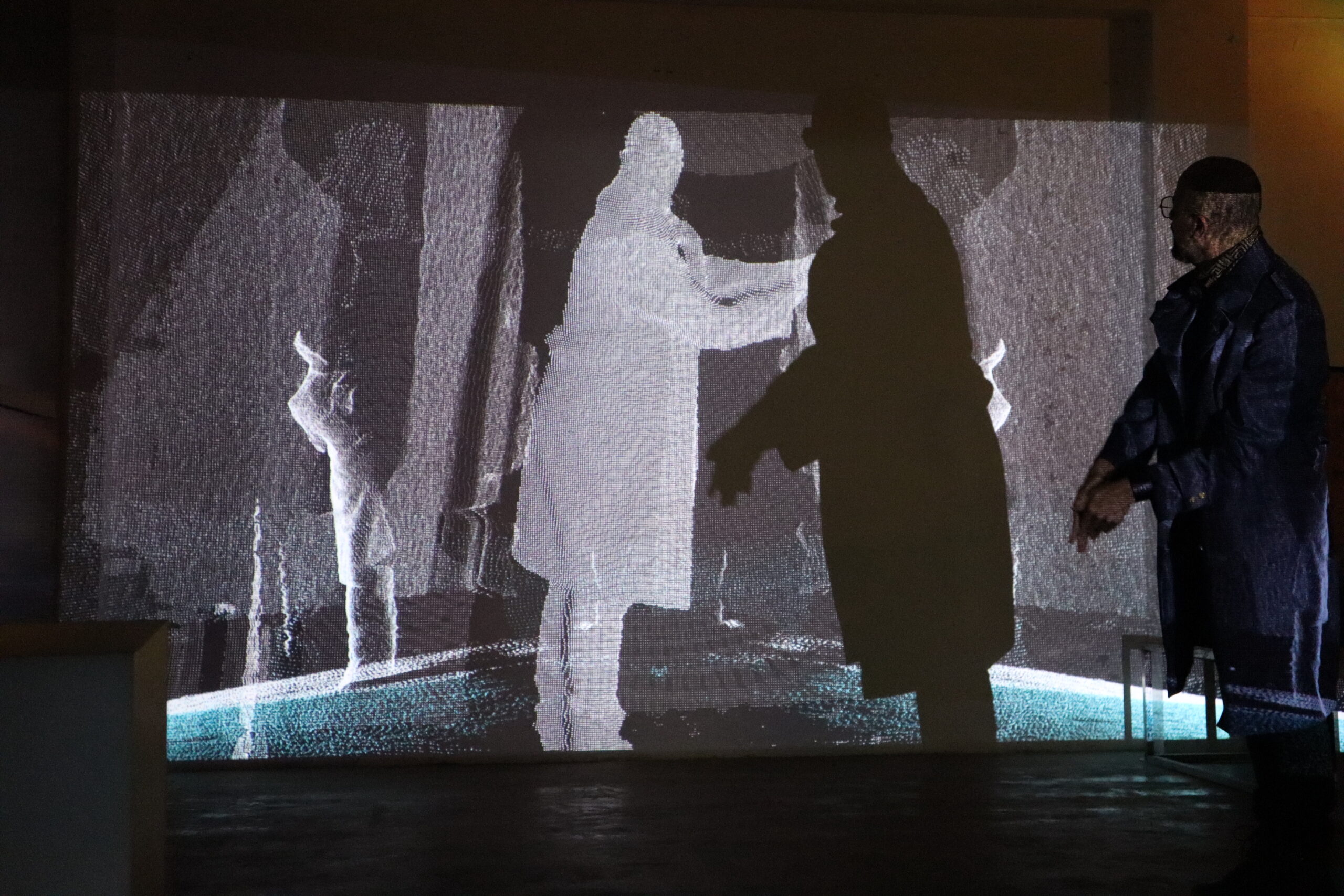
The Shadow of God by Camile Duhart
The Shadow of God is an interactive visual experience exploring the archetype of shadows in digital language and the physical world. This project investigates how digitalisation has redefined the way we perceive and experience shadows as a cultural and symbolic phenomenon.
Traditionally, the concept of shadow has carried negative connotations. However, Camile Duhart reclaims the new meanings shadows have acquired in the digital era—as a fundamental element symbolising stability, orientation, time, and security. No longer a secondary feature, the shadow becomes the focal point, revealing what is hidden and offering new perspectives on the perception of the self.
This residency takes shape as an interactive installation where, through real-time motion capture, viewers can engage with their shadow, transformed into an interactive digital element.
Camile Duhart
A graduate in Fine Arts with a Master’s in Visual Arts and Multimedia, Camile Duhart is a visual artist and video jockey. Her work merges technology and art to create immersive experiences that explore cyberculture, kinetic art, and the uncanny. Through interactive art projects, live visuals, and paintings, her creations spark a continuous dialogue between the physical and virtual worlds.
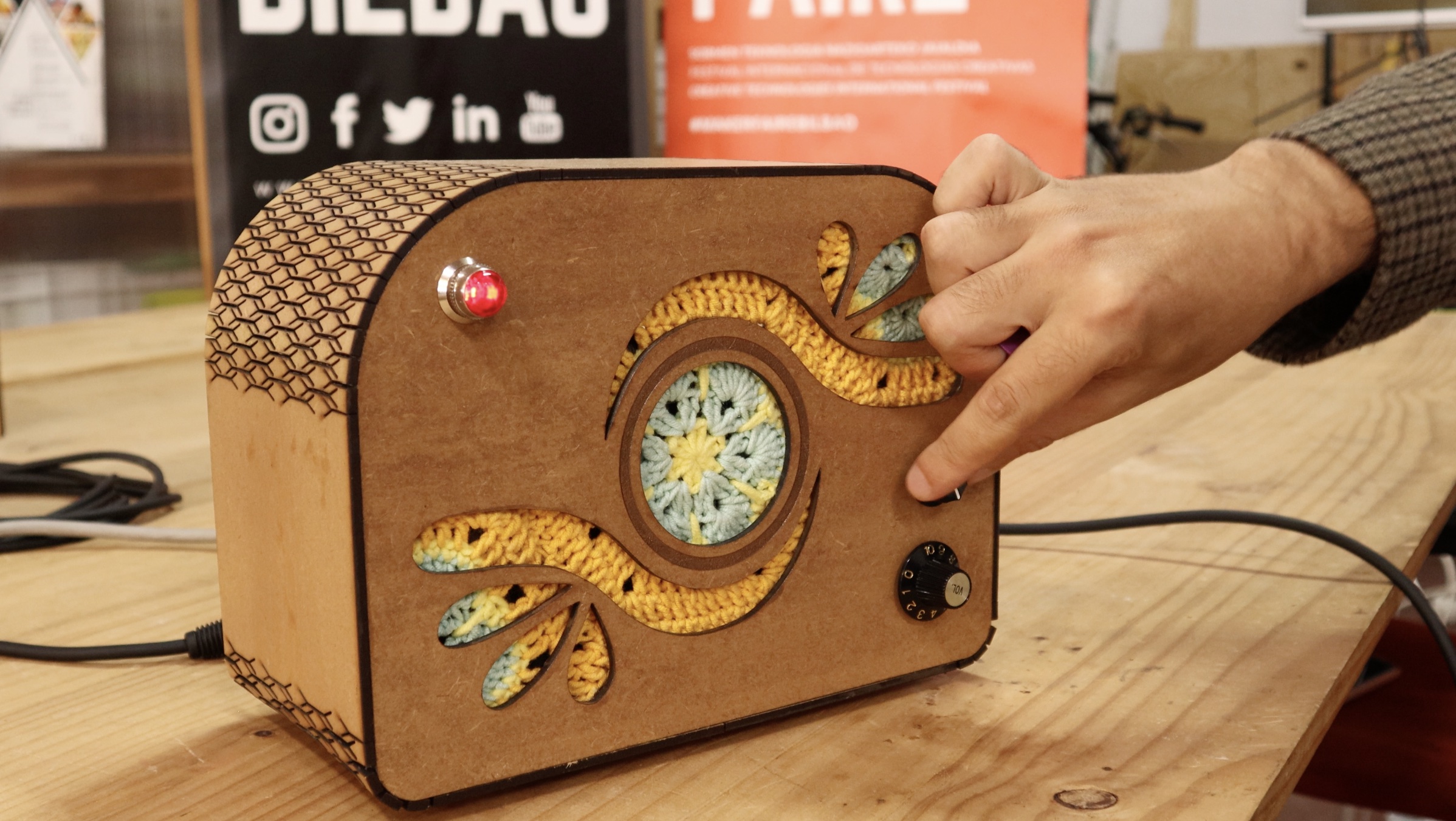
Space Ganbara by Mar Molina and Josu Hernández
Space Ganbara is a project that began as an experimental initiative to merge music, art, and electronics, combining analogue techniques with digital fabrication processes. The result of the residency has materialised in two creations: an analogue synthesiser and a distortion amplifier. Each device was handmade, not only to be functional but to become a unique piece of art.
Both devices contain reused components from old equipment and have been designed with the retro aesthetic of the 1960s in mind. The main goal of Space Ganbara is to create pieces that inspire creativity, encouraging others to experiment and have fun with their own creations.
Mar Molina and Josu Hernández
Josu Hernández is an electronic engineer, musician, and composer, while Mar Molina holds a degree in Fine Arts with a specialisation in Media Art and Technology. Josu has a strong technical background and loves experimenting with new ways to create sound. Mar is an artist and cultural mediator, with a deep interest in fostering interaction between the audience, the artwork, and the space.
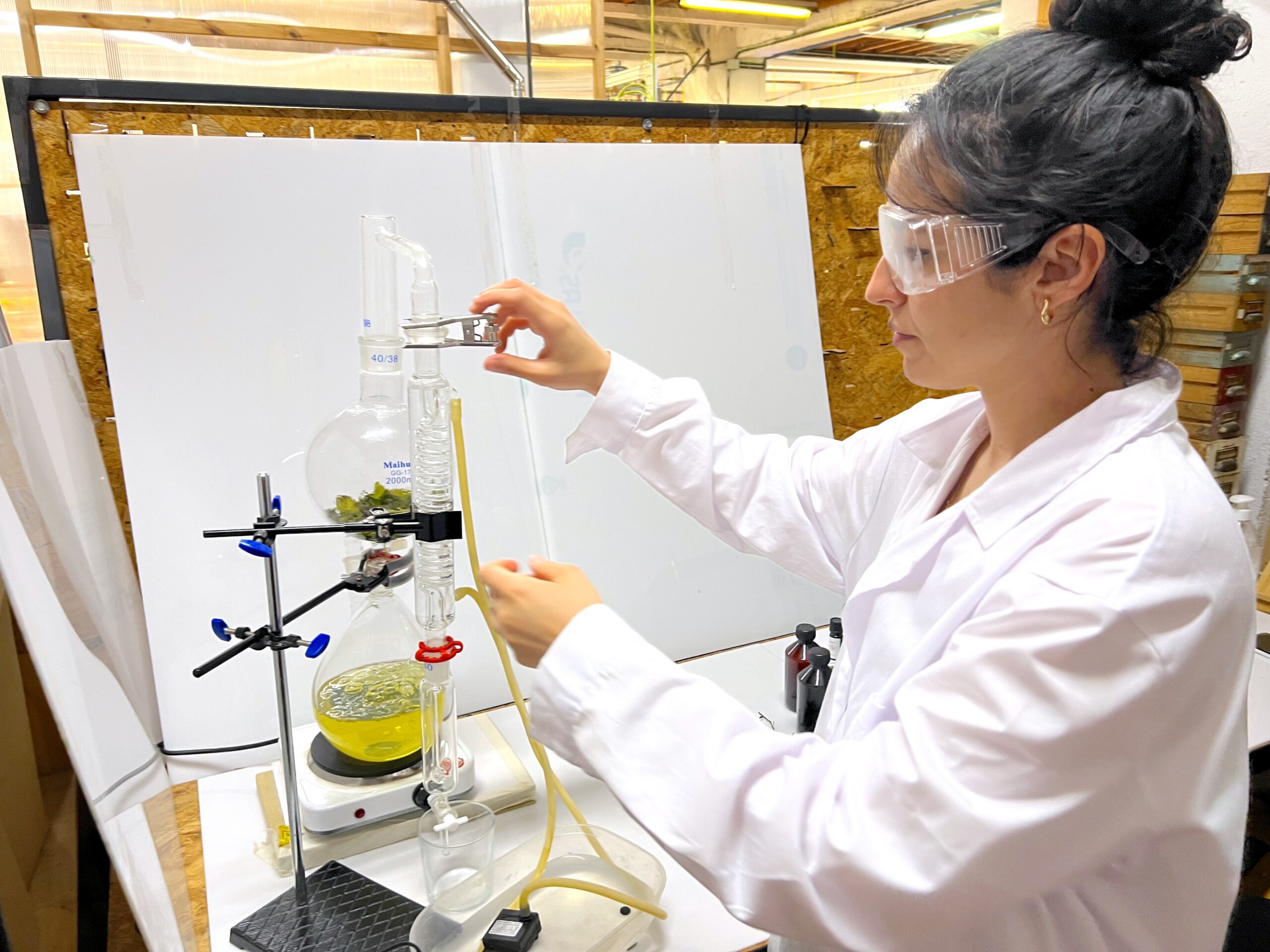
Usaimen Memoria by Catalina Ishtar Domínguez Rodríguez
The sense of smell is one of the most powerful and direct senses, closely linked to our emotions and memory. Unlike other senses, aromas do not pass through rational filters before reaching the brain, making them a unique tool to emotionally connect with our surroundings.
Usaimen Memoria is an immersive installation designed to raise awareness about environmental impact in a deep, sensory way. Its creator, Catalina Ishtar Domínguez Rodríguez, used both artisan techniques and digital fabrication tools to extract the characteristic aromas of the flora of Euskadi.
Catalina Ishtar Domínguez Rodríguez
A multidisciplinary artist combining technology, art, and environmental consciousness in her works. With a background in music and sensory creation, Catalina uses art to create social impact, exploring themes such as environmental preservation and climate change. The Usaimen Memoria project takes an educational approach. Through a multisensory experience presented as an immersive installation, visitors are invited to reflect on the role of environmental preservation and the impact degradation has on our daily well-being.
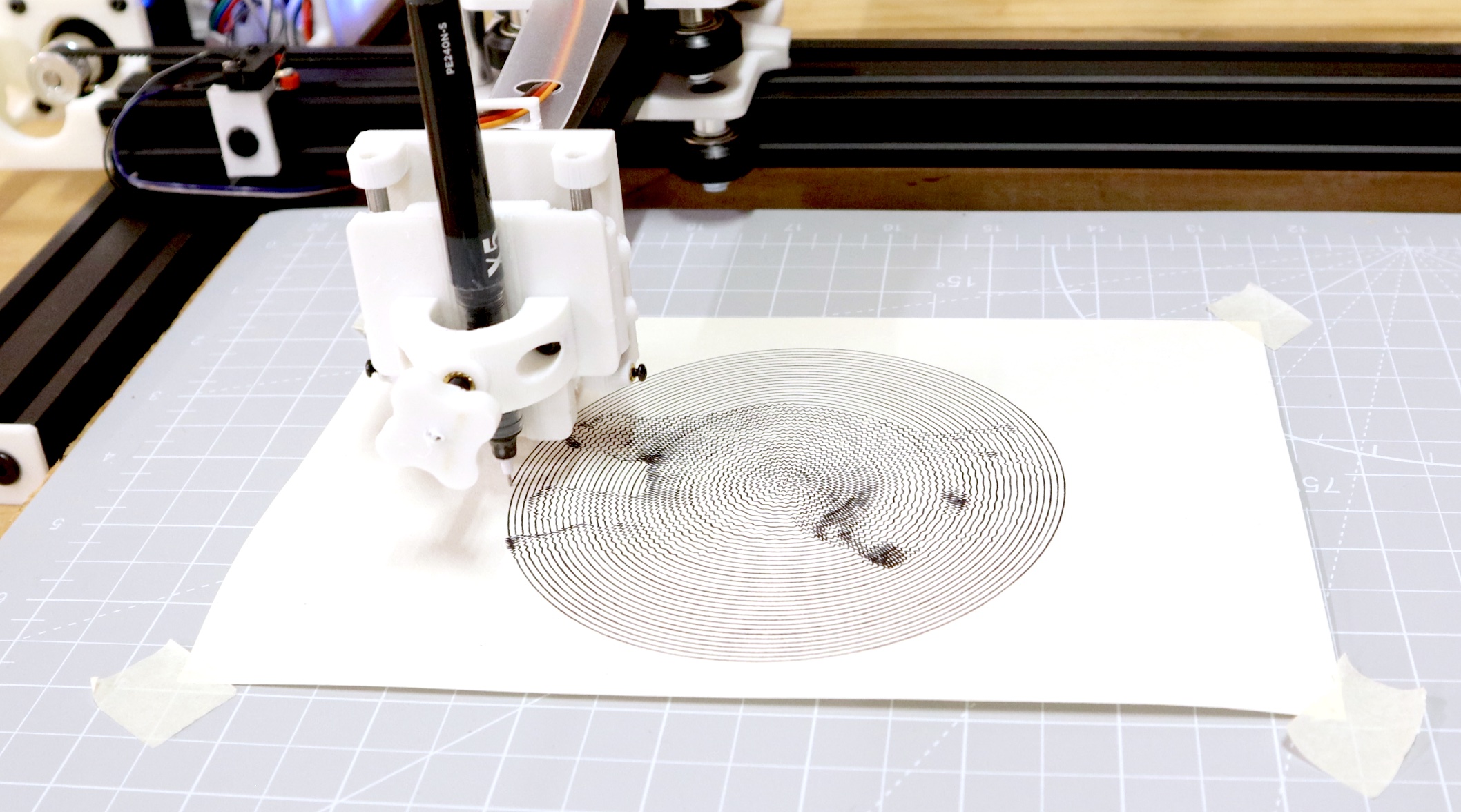
Drawmakina by Pia Pinedo
DrawMakina is a DIY, open-source, low-cost drawing machine. The project aims to combine technology and art in an accessible way, democratizing access to digital fabrication tools. It allows anyone interested to build their own drawing machine and explore the creation of generative art using code or other techniques. The list of components, assembly details, and 3D printing files have been released under a Creative Commons license.
The residency also included workshops, enabling participants to learn both the assembly of the machine and how to use tools for generative art creation.
Pia Pinedo
Product design engineer with a Master’s in design and machinery fabrication. Throughout her career, she has blended her technical training with a deep interest in art and digital fabrication. An enthusiast of the maker movement, her work focuses on creating CNC machinery and accessible tools for creative production.
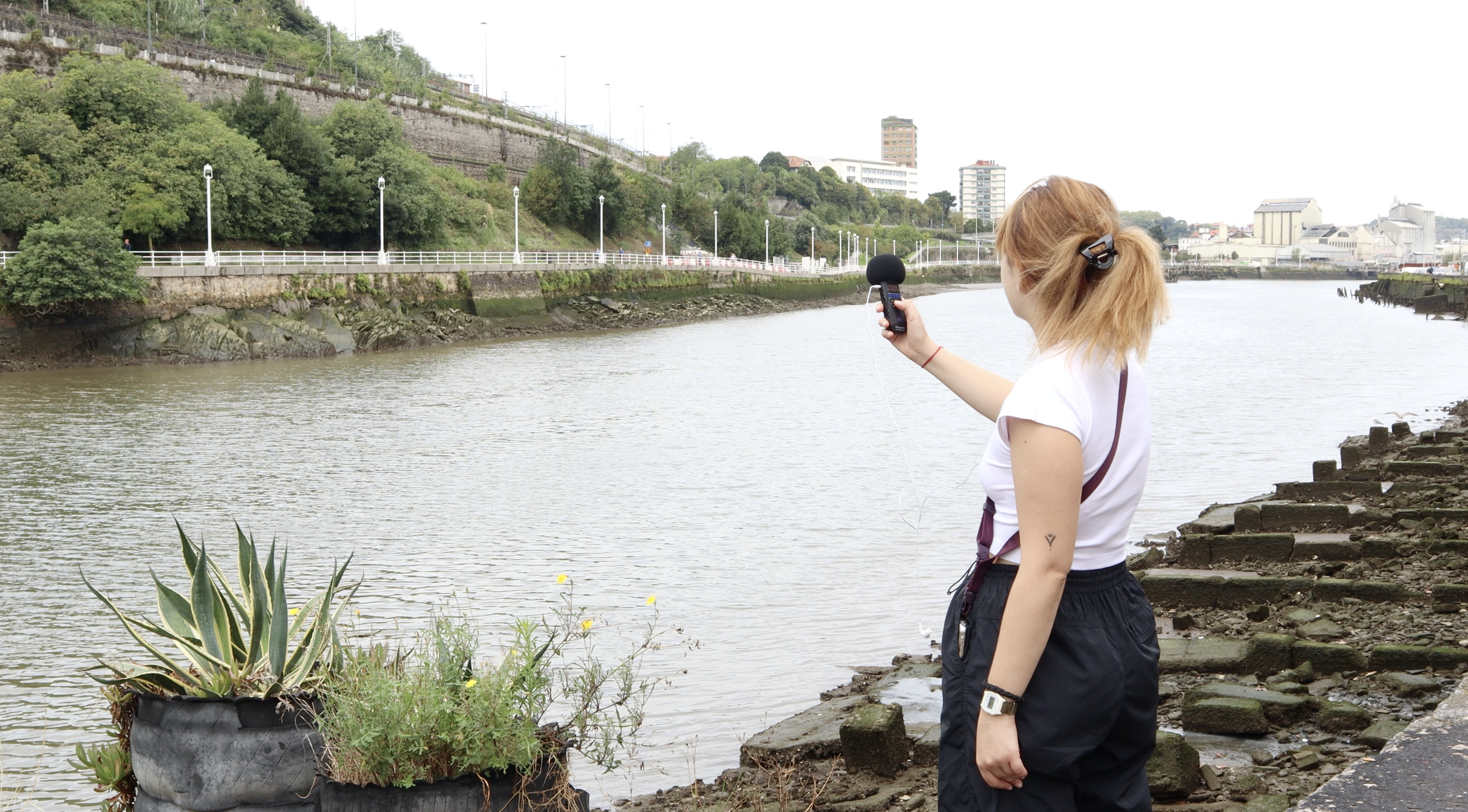
Sonidos de la ciudad by Ane Herce
Although sound is an essential component of daily life, it has traditionally been overlooked in architectural design. Sonidos de la ciudad is a project that explores the relationship between sound and the perception of environments. This work examines how sound, often underestimated in architecture, can become a powerful tool in creating new spaces. Through graphical expressions generated by live coding and soundscapes captured in field recordings, the project transforms the auditory perception of a place into dynamic images. These graphical expressions not only interpret but also respond to the sensory and acoustic characteristics of the environment, creating an immersive experience that combines both auditory and visual elements.
The outcome of the residency at Fab Lab Bilbao has materialised in an interactive audiovisual projection. The work, which combines soundscape recordings with graphical expressions, is also compiled into an interactive webpage.
Ane Herce
An architect with an innovative approach to sensory perception and its impact on architectural design. Graduating with a degree and Master’s in Architecture, Ana has dedicated her career to exploring how the senses, particularly sound, can transform the way we experience spaces.
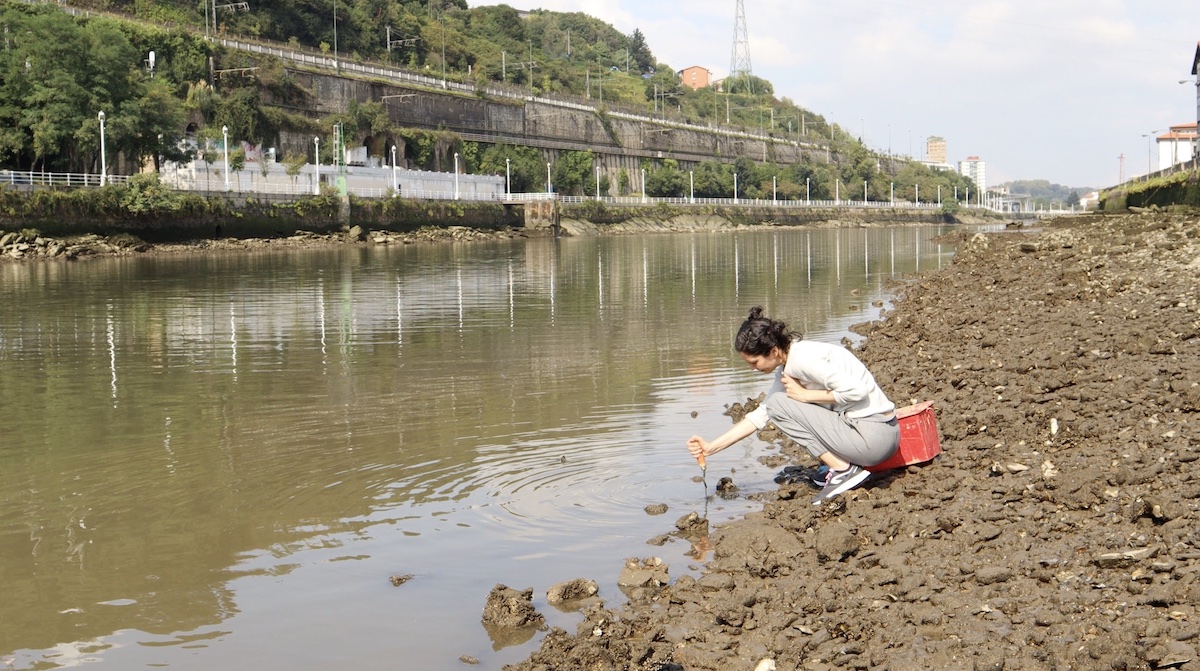
Soberanía Cerámica by Mara Riviello López
Soberanía Cerámica is an artistic project that critically addresses ceramic production methods, with the aim of decentralising the sourcing of raw materials from commercial channels. Within the framework of this project, the artist proposes an action involving the collection of clay from the metropolitan area, which is then processed to create a clay paste suitable for 3D printing. Using these technologies, cubes were fabricated with ceramic paste made from varying proportions of local clay. These cubes, designed as modules, allow a more detailed appreciation of the variations in the composition of each piece.
Soberanía Cerámica (SC) is an artistic project that primarily aims to create a space for reflection on current ceramic practices and to investigate new ways of carrying them out.
Mara Riviello López
Argentine artist Mara Riviello López is the founder and coordinator of PAC (Alternative Ceramic Practices), an artistic project focused on creating a space for reflection and research on urban ceramic practices, with an emphasis on the use of biomaterials.
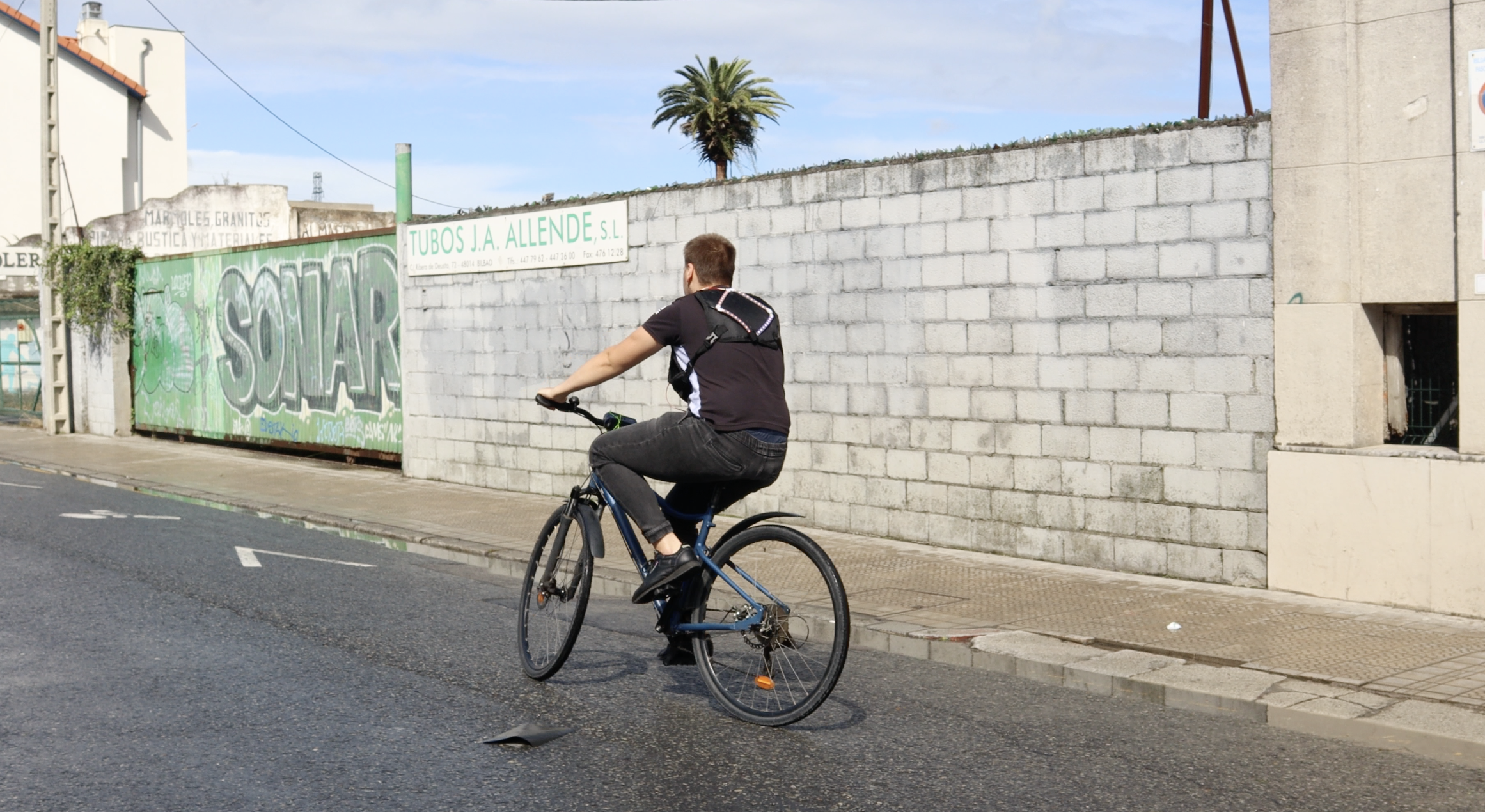
Biker Blinker by Víctor Hugo Capoeira and Yelko Feijóo Olea
Biker Blinker is a smart vest designed to improve road safety for cyclists. The project was developed by Víctor Hugo Capoeira and Yelko Feijóo Olea, students of the Higher Degree in Electronic Maintenance. This project was born out of the observation of cyclists’ lack of visibility, especially at night, a situation that increases the risk of accidents.
The two students decided to develop a system to enhance the safety of cyclists by using open-source technologies to create a lighting signalling system. The system uses motion sensors to detect turns and changes in speed, transmitting the information via Bluetooth to a set of LED lights, so the signalling is done automatically.
Víctor Hugo Capoeira and Yelko Feijóo Olea
Second-year students of the Higher Degree in Electronic Maintenance at the Emilio Campuzano Institute. During their studies, they were introduced to Arduino, sparking a deep interest in technology and programming. Learning to program and seeing how ideas could be transformed into real projects was one of the main motivations for them to continue researching and learning about these technologies.
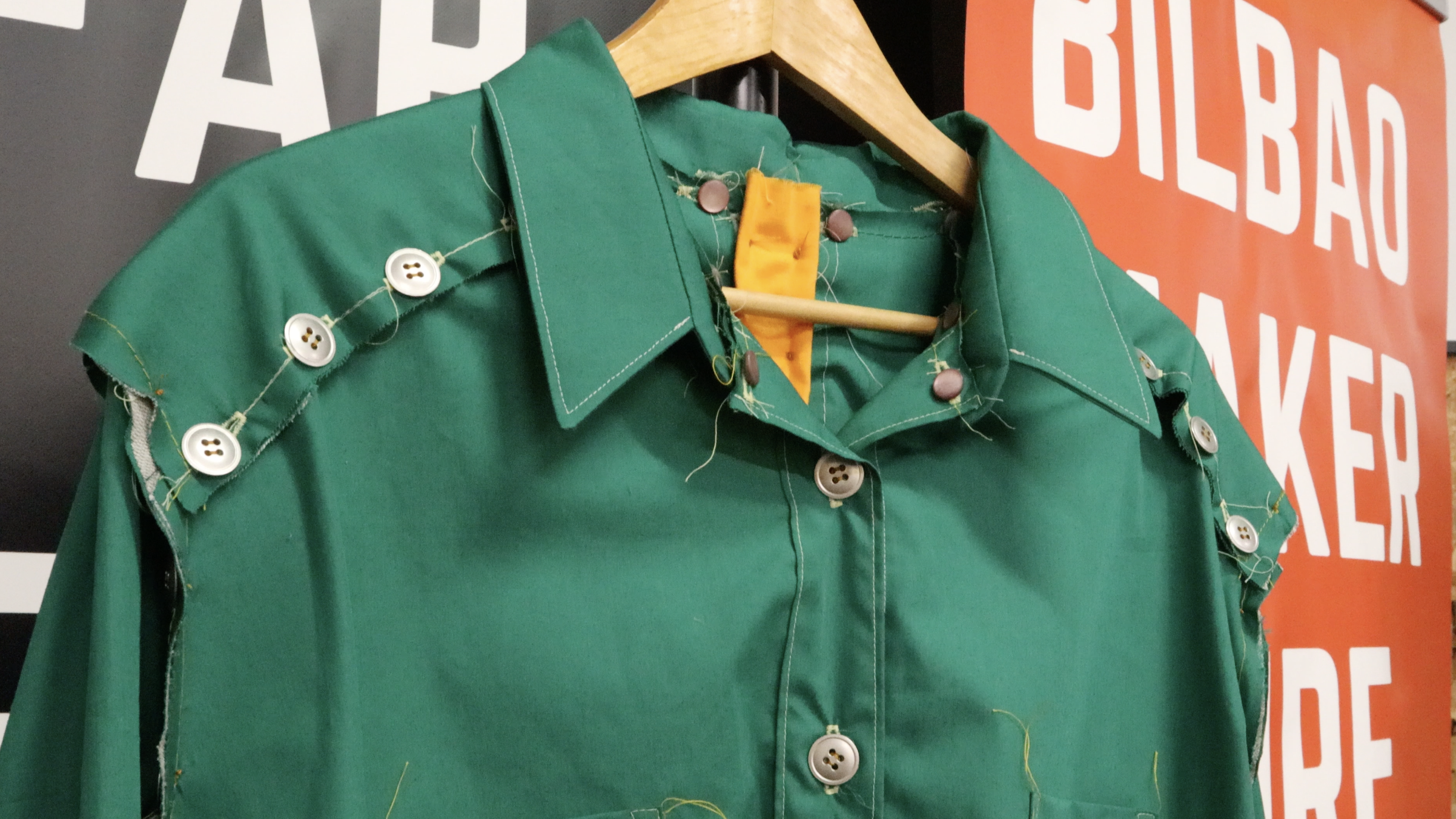
Cuerpos Ausentes by Nicolás Marchiaro
The Cuerpos Ausentes project explores the integration of digital technologies and fashion design, merging practices from architecture, sustainability, and art. Inspired by artistic practices, designer Nicolás Marchiaro aims to recontextualise fashion, with the idea of presenting clothing as if it were a work of art. One of the key objectives of the project is to explore the use of local resources and DIY digital fabrication techniques.
This project emerged as a response to the negative environmental and social impact of fast fashion, exploring alternatives where design and digital fabrication tools play a central role.
Nicolás Marchiaro
An artist and designer combining fashion and architecture practices and techniques. With over 14 years of experience, he has explored how computer-aided design tools and 3D modelling can transform production methods in the fashion industry, aiming to find more sustainable alternatives. His work, inspired by conceptual art, seeks to challenge fast consumption trends through a modular and experimental aesthetic.
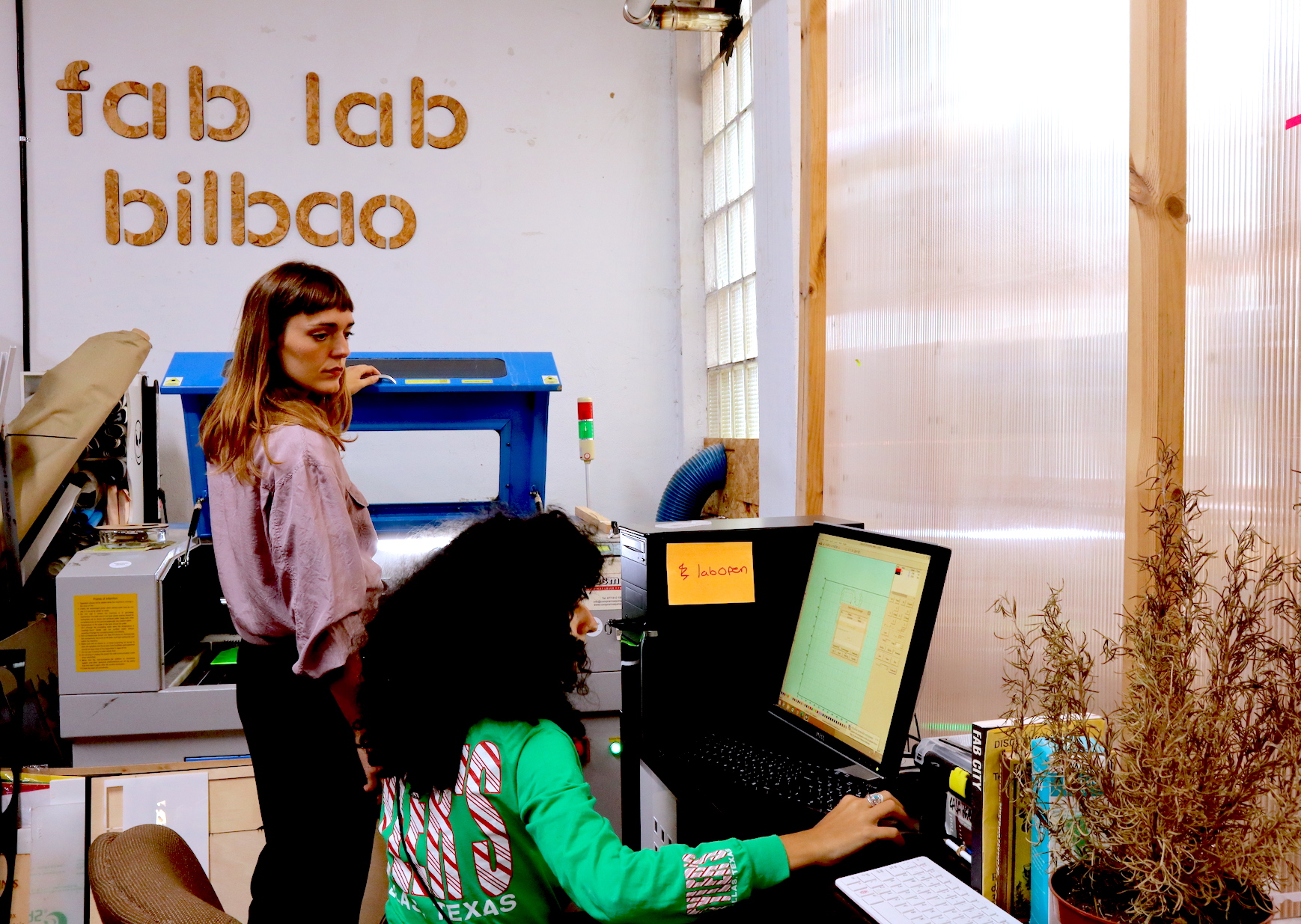
Trashy Hanger by Estudio Bokashi
Trashy Hanger is a research project developed by Estudio Bokashi, where biomaterials are the primary resource used to replace one of the most common and discarded items in the textile industry: hangers. Beyond the environmental issues caused by this product, the aim of Trashy Hanger is to develop a creative hanging system that is fun in aesthetic and, above all, functional. In this way, anyone interested in replacing their plastic hangers will have the option to replicate the creation process.
With this project, Libe Kerroum and Laura Marchante have combined the world of sustainable fashion with maker technology, utilising digital fabrication resources to optimise the creation process and generate material with minimal waste.
Estudio Bokashi
Founded by Libe Kerroum and Laura Marchante, Bokashi was created with the goal of establishing spaces for meeting, sharing, and debating the future of fashion in a creative way. Bokashi’s primary intention is to promote experimentation and outreach around sustainable design, as well as to raise awareness of alternatives and initiatives in the fields of biodesign, regenerative practices, and the circular economy.
